Just like people, cats are unique is so many ways, especially when it comes to petting and playing. Of all the activities a human can provide for a cat, they seem to love these two activities the most. Probably because it's near impossible for a cat to pet itself or wave a toy around. This my friends... is why we were put on this earth. Hands were made for petting cats, holding toys and opening cans of food! Well, from a cat's point of view anyway....
Your cat may think that your hands are only for petting and show no interest in an interactive toy. Or...perhaps your cat gets confused about your hands all together and decides to give you a bite whenever the opportunity knocks? The question is, when is it ok to pet and when should you stop?
Cats can get overstimulated from petting the same way humans can get annoyed from a bad back rub or too much physical interaction. Sometimes, you simply do not want to be touched or talked to for that matter. Ever get on a crowded bus after a long day at work and some stranger wants to tell you their life story? You want to get home and crawl into a ball.
Well, cats tell us their feelings in many ways, some obvious, others very subtle. Here are some clues:
Opposite of dog communication, cats often wag their tails when they are getting overstimulated from petting. Also, they will look at your hand as if to say, " Uh...you keep at this and I'm going to let you know when to stop... with my teeth". They will spin around and direct their heads back into your hand, a sly way of telling you where they prefer the attention or they might just simply walk away from the action all together. Remember, just because kitty is showing you the belly, doesn't necessarily mean it's an invitation for petting. Most likely, it's a trap!
In extreme cases, cats flatten their ears, roll the skin on their backs, dilate their pupils, kick your hand with their hind legs, growl, hiss and swat. If you've gotten to the point where you cat is showing this level of aggression, your going to need to be more aware of the limits they are trying to convey to you.
So what can you do to prevent an over-stimulus reality check? Be able to see it coming. Know that if your cat has bitten or swatted before that they are likely to do it again. Give breaks when your cat is getting antsy. Come back later and pet in small doses. Try re-directing the aggression to an appropriate toy instead. Never pet a cat that has bitten from over-petting while you are tending to something else. For instance, if your cat is sitting on your lap while you pet and watch TV. Chances are you won't see the bite coming!
The most common behavior mistake that people make is to "hand wrestle" with a cat that gets nippy. Some people think its cute or spunky, but what they are really doing is training a cat to think it's acceptable to bite harder and harder each time. Keep play and petting separate!
Cats that overstimulate are more likely to be playfully aggressive, mistaking your hands for toys. So... one more time...if your cat is biting at your hands in a playful way, withdraw the reward (your hand), maybe give a verbal correction like, "NO!" and re-direct the focus to a toy. Switch the routine to an option with more value for play than your fingers.
Low activity and boredom are likely to contribute to your cat's biting behavior more than anything else. You have to create an environment in your home that is stimulating and fun. Otherwise, it's going to be you that your cat uses as a toy. A few simple additions to your home environment can make any cat feel more at ease and a lot less likely to choose biting over play time, or even just looking out a window at the birds outside. Remember, although cat's do just fine living inside our homes, they were not intended to be couch potatoes. They need to exercise, climb, play, hunt and just be cats.
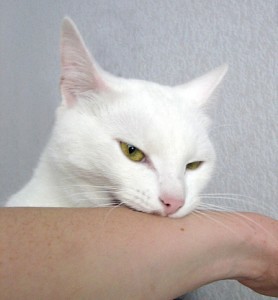
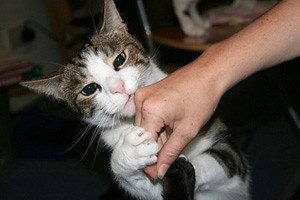
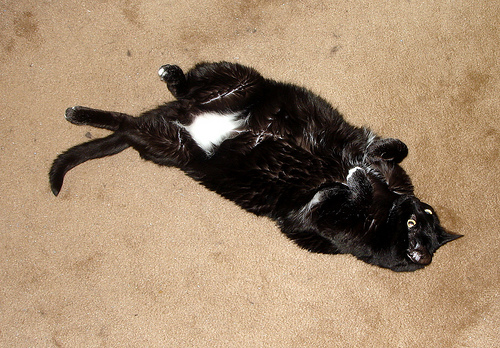
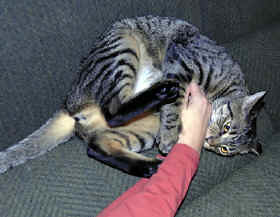
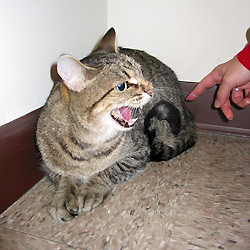
No comments:
Post a Comment